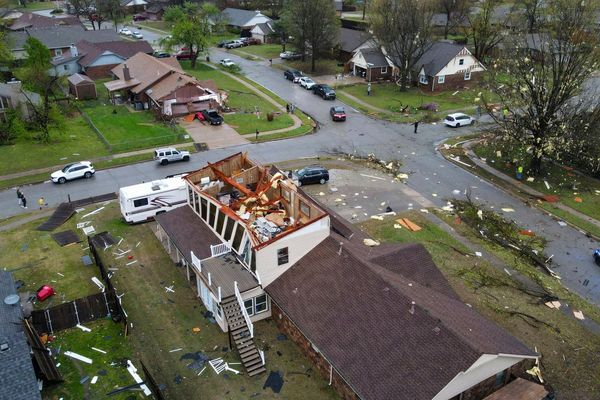While the Isai Vellala community in the composite Thanjavur district dominates nagaswaram- and thavil-playing, other communities have been playing the instruments in Tamil Nadu, Andhra Pradesh, and Karnataka. One of them is the community of Maruthuvars (physicians) or barbers. But their families have gradually given up the occupation of barbers to become full-time musicians or take up other jobs.
Terada Yoshitaka, Japanese scholar and author of T.N. Rajarathinam Pillai: Charisma, Caste Rivalry and the Contested Past in South Indian Music, has cited the Gazetteer of Coimbatore, South Arcot, Salem, Ramanathapuram, and Pudukottai, besides that of districts in Andhra Pradesh and Karnataka, that had made a reference to the community of barbers in the field of music. He says the majority of the Chennai Maruthuvar musicians moved to the city during the 20th Century from neighbouring districts, especially Chengalpattu and North Arcot. But researchers have not paid adequate attention to the presence of a substantial number of nagaswaram and thavil players from the Maruthuvar community in Kanniyakumari and the composite Tirunelveli district.
Historically, they were known as Mahamathirar and the Lexicon of the University of Madras says they were Maruthuvar. “The original occupation of this caste is believed to have been that of a surgeon for males and of a midwife for females, onto which barbering and playing music were later added,” says Terada.
In the same lineage
Quoting Edgar Thurston, the British Superintendent at the Madras Government Museum, from 1885 to 1908, who contributed to research in zoology, ethnology and botany of India, Terada writes that musicians and barbers are often found not only in the same lineage but also in the same household. “It is commonly believed that all Maruthuvar musicians double as barbers,” he adds. “I have seen my grandmother and grandfather treating patients. But none in the community took up the occupation. But my father Narayanan played nagaswaram and I have been playing thavil,” said N. Mani, 70, who hails from the Maruthuvar community, and is well-known among the nagaswaram troupes.
Mr. Mani has played at classical nagaswaram concerts and naiyandi melam, a folk form, performed during Kodai, the annual festival of folk deities in the southern district. Seven members of his family are playing nagaswaram and thavil. He said Sundaram, a thavil player from Santhapuram in Kanniyakumari, belonged to the Maruthuvar community and performed at only classical nagaswaram concerts and trained a lot of persons from the community in thavil.
Even though nagaswaram and thavil music is considered auspicious and earned the title, mangala vadhyam, the nagaswaram and thavil players in Kanniyakumari and Tirunelveli districts in the past also performed at funeral ceremonies. “The nagaswaram player would play the raga Muhari, evoking pathos, and the thavil player would play the solkattus of thom tha nagathim thom thom thom. There is a set of tunes and ragas that would be played at funeral ceremonies,” Mr. Mani explained.
A practice abandoned
S. Nagendran, president, Hindu Maruthuvar Samuthaya Mempattu Sangam in Kanniyakumari district, said nagaswaram and thavil players of the Maruthuvar community in Kanniyakumari district would play at funerals in villages such as Alathankarai, Murungavilai, Mugilanvilai, and Agastheeswaram. But the practice is no longer followed in the district as “it is considered inauspicious” and the players who performed at funeral ceremonies would not get opportunities at temple festivals.
K. Ayyappan, a nagaswaram player from Eethamozhi, said his ancestors would have played at funeral ceremonies because of poverty. They would perform on the day of funeral and at the 16th day and 41st day ceremonies. He said most of the men of his community had given up the vocation of barbers and have become nagaswaram and thavil players or pursued other jobs. The community has a big Thampiran temple and every year it brings the best nagaswaram and thavil players to the temple festival.
Telugu inscription
Though it is not clear when the Maruthuvars doubled as musicians, Terada talks about a Telugu inscription (dated AD 1552) found at the Chennakesava Temple at Kamalapuram in Kadapa district, Andhra Pradesh. It records the gift of land to a barber named Pumala Chinnaya for the employment of musicians in the temple. “V. Rangacharya, the chronicler of this evidence, interprets this inscription as indicating that barbers were musicians at the temples as much as they are today,” writes Terada.
Mr. Nagendran’s father Sivathanu was a nagaswaram player and a student of Nainarsamy of Tiruchendur, who secured a place in thavil-playing among the thavil players of the composite Thanjavur. His grandfather was also a musician. “I underwent training in the Industrial Training Institute (ITI) run by the government. But the circumstances forced me to take up thavil-playing,” says Mr. Nagendran, who runs a naiyandi melam troupe.
Mr. Ayyappan is a third-generation nagaswaram player. His father S. Krishnan was also a nagaswaram player and his grandfather Gurusamy played thavil. “Though I learnt nagaswaram, my family was against my taking it up as a full-time occupation. I learnt tailoring. Since the money I earned as a tailor was not adequate to make ends meet, I became a nagaswaram player,” he said. Some of the finest naiyandi melam players of Kanniyakumari and Tirunelveli districts were and are from the communities of Maruthuvar, Thondaman, Padayachi (inland fishermen), and Dalit.
A good income
The nagaswaram and thavil players of a naiyandi melam troupe (with two more pampai and murasu players) make good money as the temples of folk deities in southern districts regularly have festivals and naiyandi melam is an integral part of every festival, though Kerala Chenda Melam has made an entry. The temples of Sudalaimadan, Mutharamman, Isakki Amman, Santhana Mariamman and other folk deities are constructed in a way that they resemble the temples of Vedic deities. Old idols of deities made of lime and sand have yielded place to granite structures and Vedic rituals are followed. But the folk art forms continue to flourish.







